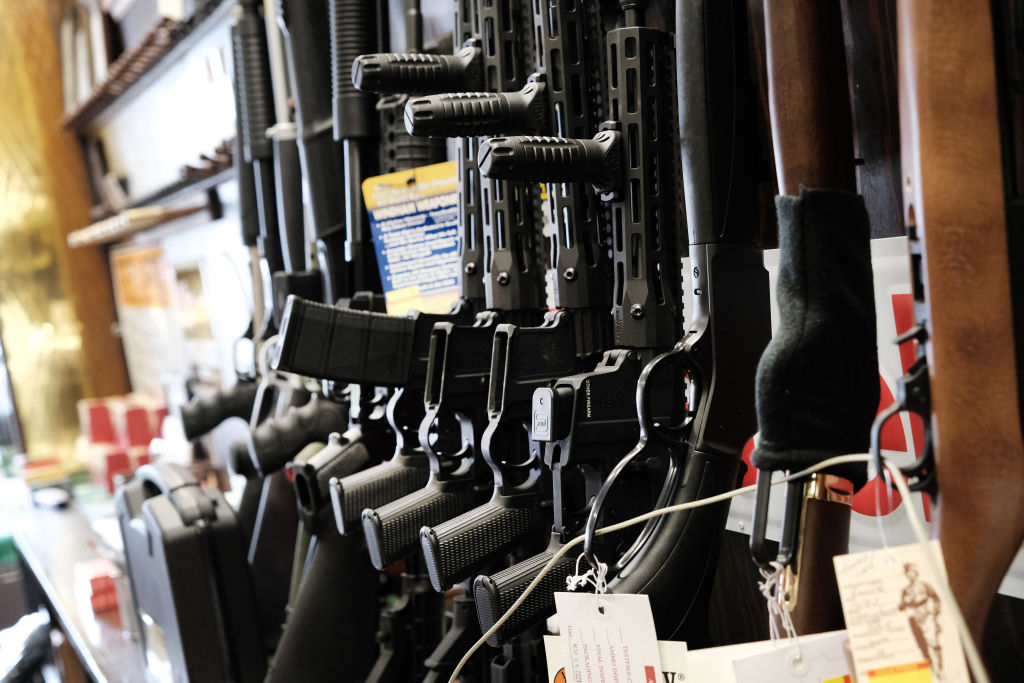Americans aged eighteen to twenty account for only four percent of the population but 17 percent of murderers, almost always male. School shootings get the most attention. The problem is not just the guns. It is the young men who wield them. That means any possible solution rests with the shooter, not the firearm.
There’s a pattern inside those sordid statistics, with some 70 percent of school shootings since 1999 having been carried out by people under eighteen. The median age of school shooters is sixteen. It’s kids shooting kids; whether because they are left out, bullied, teased or angry at some slight or teacher’s offense, it is kids killing kids. Since these killings tend to be “local,” typically the shooter and the dead share a racial and/or social-economic background, leaving “white supremacy” as a cause in the trashcan alongside the 1990s blaming “heavy metal,” video games, Marilyn Manson and Satanism.
There have been at least 554 school shooting victims spread across 331 schools, with over 300,000 children exposed to gun violence at school in the US since the Y-in-the-road game-changing Columbine High School massacre. The frequency of shootings has increased, with a surge of thirty-four incidents in 2021, the highest in any year since Columbine.
Since it’s not the guns per se but young men who are to blame, more traditional gun control is unlikely to make much of a difference. Already under the Federal Gun Control Act, shotguns and rifles may only be sold to individuals eighteen years of age or older. All other firearms can be sold only to individuals twenty-one years of age or older. Licensed sellers are bound by the GCA minimum age requirements regardless of state law. However, if state law establishes a higher minimum age, the licensee must observe the higher age requirement.
Background checks vary from state to state but generally seek to prohibit sales for reasons such as a history of domestic abuse or violent felony convictions, crimes unlikely to snare a shooter just out of high school. No background check is going to catch someone seething with rage over race or his grandmother. Checks also are at the time of purchase and gun ownership can be forever. There is the private transfer loophole that bypasses most background checks, but there is no evidence that young mass killers seek out this method of gun purchase.
There is also the inexplicable Columbine divide that factors into kids killing kids. Pre-Columbine America saw school shootings number only approximately 300 instances in 150 years. Post-Columbine shootings number 331 in only twenty-three years. Something very big is very wrong in America and our kids are not alright. Add in drug use, overdose deaths and teen suicides (many involving guns; suicide is the third greatest cause of teen death, with homicide in the number two position) and you have more than a crisis: you have a nightmare.
Though the Columbine killers had few friends, it is doubtful no one (including parents and siblings) had no idea about the dark thoughts running through their heads. Later this would all be blamed on the then-new shooting games like DOOM (a “murder simulator”) and heavy metal music. But it seems much less a surface problem and more something deeper and thus ironically more visible. In other words, in Columbine and likely in many of the other 331 modern-era school shootings, somebody should have seen it coming.
Therein lies several potential solutions. Lessening gun access in specific, targeted ways may help, such as raising the federal age for long guns to age twenty-one or older. Provide tougher penalties for anyone who illegally sells guns to those underage, and for adults/parents who do not secure their guns. Such measures are statistically supported and bound (and thus not a slippery slope), do not affect most current gun owners and simply require the sacrifice by legitimate young hunters of using dad’s old rifle another year.
But real change will require enhanced red flag laws, also known as Extreme Risk Protection Orders, which enlist parents, gun sales people, teachers, and peers in spotting students who should not have ready access to firearms. A red flag law allows people to petition a state court for the temporary removal of firearms from a person who may present a danger themselves or others. A judge makes the final determination.
Such laws exist in nineteen states and DC at present (fourteen states of those states adopted red flag gun laws after the mass shooting at Marjory Stoneman Douglas High School in Parkland, Florida) with considerable variation. One of the most significant variations is who may petition a court to take someone’s guns away. Every state currently allows law enforcement to do so, but California is the only one which includes family members. None of the laws in place allow teachers, clergy, doctors, coworkers or school peers, people who may well know a young man’s intent best, to petition. A federal law which standardizes such criteria is badly needed.
Opposition to red flag laws tends to fall on standard grounds, specifically that not all states allow the gun holder due process at his hearing (easily remedied by a federal law that does) and the generic concern about the government having the ability to take a gun away. Yet gun confiscation via a hearing, though likely needing a Supreme Court decision of its own for clarity, appears to be an example of presumptively lawful regulatory measures (such as regulating concealed weapons, prohibiting possession of firearms by felons, etc.) already permissible under Heller v. District of Columbia. None of the existing red flag laws take guns away permanently, only for a cooling off period of several months to a year.
Basic red flag laws are judicially sound, and have, for example, been used in Florida nearly 6,000 times since 2018 and survived a state Supreme Court challenge there. And Florida has had no school shootings since the law went into effect. New York’s current red flag law, had it been properly implemented, could have stopped the recent grocery store shooter.
School shootings almost always involve a delineable type of shooter: sixteen to eighteen years old, male, loner. Red flag laws are designed to take guns away from people before they commit crimes and have been legally tested. As a potential national-level solution they do not restrict gun ownership among most adults, and barely open the Pandora’s Box of the Second Amendment and gun bans. They are as apolitical as anything to do with guns in America can be and are supported by 72 percent of Americans. Donald Trump has backed red flag laws.
In the search for answers following the latest school shooting, a federal red flag law is worth a try.


















